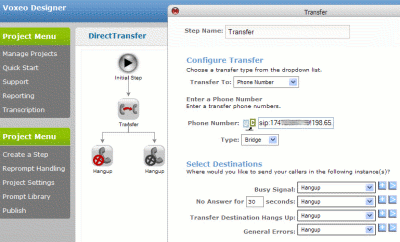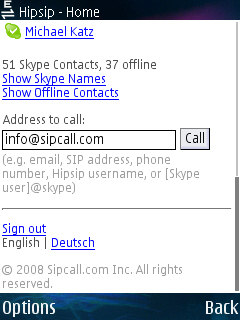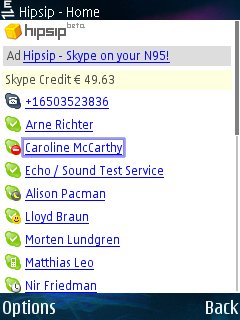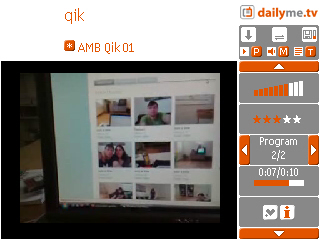The VoIP company
Jajah is entering more and more markets and now they are gearing towards the wholesale business. That's what I learned at Barcelona's Mobile World Congress, where I met a company which had been approached by the Austrians who wanted to sell them phone minutes in a big scale. "Roman is flying high", said my contact about Jajah co-founder Roman Scharf. "He is moving on Tier 1 carrier level and wants to have his part of the phone card business." A similar impression I got from my interview in Barcelona.
Roman tells that so many new users are signing up to the the company's latest callthrough service, Jajah Direct, that there has to be a shift in business. After beta testing the service in Germany, UK, USA and Austria there will be a big rollout in 30 to 50 countries. In some weeks we should see it in every European country. Jajah Direct assigns local numbers from your country to contacts abroad for cheap phone calls over the internet. People can save a lot on international phone calls. That's why the Swedish company
Rebtel had invented the same business model yet two years before, as they point out in
their blog. "With Jajah Direct we found a way to make VoIP as easy as a normal phone call: dial a number, press the call button and start to talk", says Roman Scharf. Even his grandmother in Austria has a number in Salzburg that she can call to make his office phone in the US ring.
The technical part is tricky because Jajah relies on shared phone numbers. "We can serve millions of customers with just 99 numbers per country", says Roman. Therefor Jajah has to know the caller's number. Users have to tell their home, office and mobile numbers before they can assign up to 99 consecutive Jajah numbers to their contacts from abroad. Jajah knows that when caller A dials number B he has to be redirected to number C abroad. Another caller, D, who calls the same number B, will be connected to number E. Only anonymous callers, who don't transmit their phone numbers, can't take part in this game.
Roman sees Jajah Direct as great chance to grow dynamically in the important telecommunications markets. About the companies former flagship service, which relies on callback, he now says that it's only useful for people sitting in front of their computers. With just one click on the Jajah button in Outlook or the browser you can start a call. "Other technologies we have also tried, like Java or Symbian software or SMS bridges, were too different from normal telephony", says Roman. Too few people installed an extra software on their cell phones for international calls.
Also the telephony backend has its quirks, Jajah had to learn. When the company was young they didn't have own networks and had to send all traffic to wholesalers, always chosing the most competitive offer. Until Jajah learned that this was an Achilles' heel. They just couldn't guarantee for voice quality, but customers expected their calls to sound like normal phone connections. Also the price margins were razor thin for Jajah. "That's why we started to build up our own infrastructure at the beginning of 2007", says Roman. "You will hear a lot about it in the next weeks and months."
According to his plans, other Internet companies, competing VoIP services, cable TV providers and incumbent phone companies will realize that this infrastructure doesn't have to be only useful to Jajah, but also to them. Roman says that Jajah is already terminating international calls for a Canadian telco company. With two big US cable companies they have similar contracts. "We are negotiating with seven or eight big European players", he says. "We have the most interesting infrastructure of the industry", touts the Austrian high flyer. Then he explains how Jajah can power even the most outdated fixed line phone systems, every kind of mobile phone network (GSM, CDMA, UMTS) and the latest freaky services like
Emobile's data only cell phones. They don't even have a voice channel, but the Japanese users can make cheap VoIP calls over SIP with a preinstalled Jajah client.



